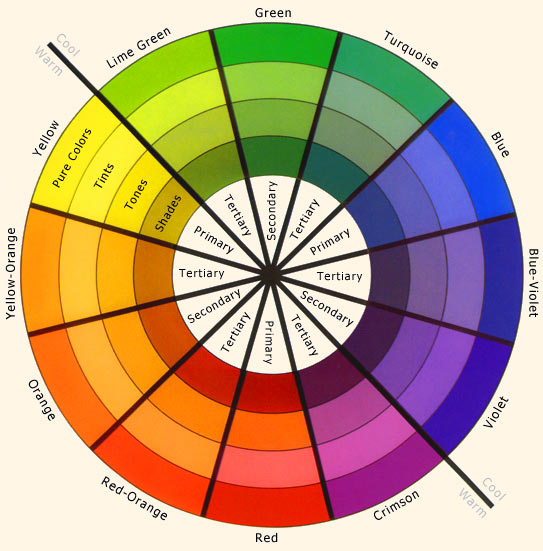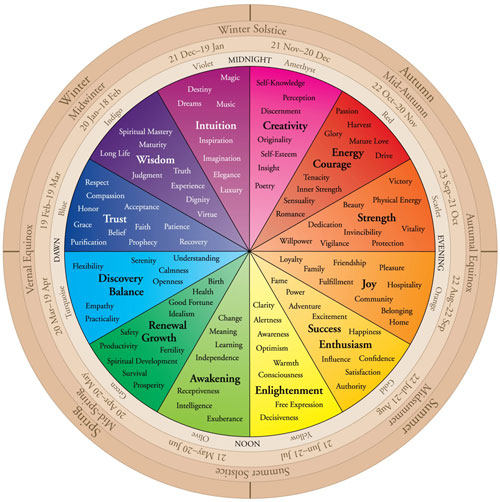Wheel Of Colour


Picking out paint colors can be a confusing experience, leaving you racked with indecision as you peruse swatches from paint companies intent on re-creating all of the 7 million colors distinguishable to the human eye. Trying to figure out which of those colors will mix harmoniously on your living room wall is enough to make you turn straight to the ecru- and eggshell-white family and never leave. One way to go, however, is to use a complementary color scheme. Proving the rule that opposites attract, these pairings can always be found at opposite ends from each other on a paint color wheel.
When put together, they bring out the best in each other, making both colors look cleaner and brighter than if either were mixed with, say, a neutral gray or a different shade of the same hue. An essential tool for paint pros everywhere, the color wheel is constructed to help you see the relationships between different hues. The bases are three primary colors: red, blue and yellow. These are then combined to make the three secondary colors: orange, green, and purple. Finally, the remaining six colors on the wheel are known as tertiary colors and are mixes of the secondary colors, including such hues as red-orange and blue-green.
A color wheel or colour circle[1] is an abstract illustrative organization of color hues around a circle, which shows the relationships between primary colors, secondary colors, tertiary colors etc. Learn to use a color wheel. HGTV.com shows you different types of color scheme possibilities and color applications for bedrooms, bathrooms and more.
Familiarizing yourself with the color wheel can help you understand how to best mix and match a cool color with a warm one, for a naturally balanced room. Here are some examples of how to use these color pairings effectively. Picking out paint colors can be a confusing experience, leaving you racked with indecision as you peruse swatches from paint companies intent on re-creating all of the 7 million colors distinguishable to the human eye. Trying to figure out which of those colors will mix harmoniously on your living room wall is enough to make you turn straight to the ecru- and eggshell-white family and never leave. One way to go, however, is to use a complementary color scheme.
Proving the rule that opposites attract, these pairings can always be found at opposite ends from each other on a paint color wheel. When put together, they bring out the best in each other, making both colors look cleaner and brighter than if either were mixed with, say, a neutral gray or a different shade of the same hue. An essential tool for paint pros everywhere, the color wheel is constructed to help you see the relationships between different hues. The bases are three primary colors: red, blue and yellow.
These are then combined to make the three secondary colors: orange, green, and purple. Finally, the remaining six colors on the wheel are known as tertiary colors and are mixes of the secondary colors, including such hues as red-orange and blue-green. Cafe Manila 8.6.6. Familiarizing yourself with the color wheel can help you understand how to best mix and match a cool color with a warm one, for a naturally balanced room. Here are some examples of how to use these color pairings effectively.